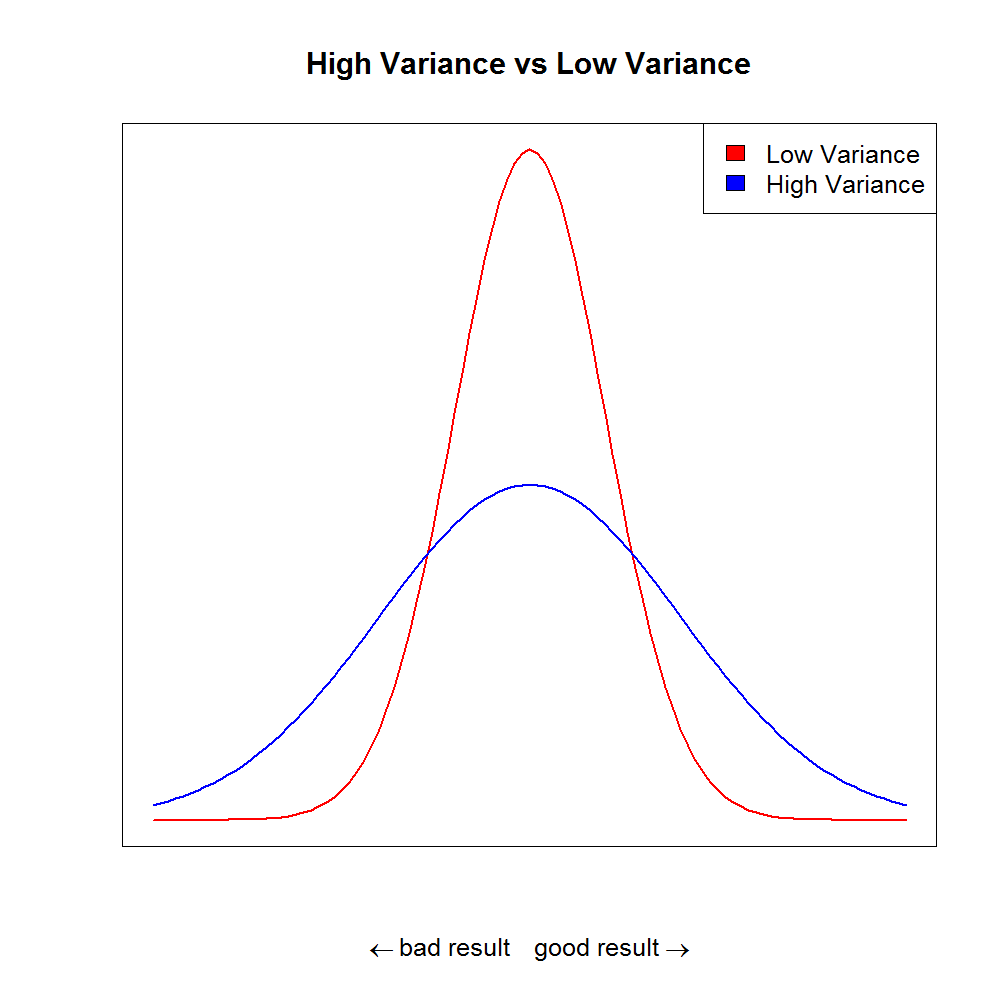Measuring risk of a portfolio
Introduction to Portfolio Analysis in Python

Charlotte Werger
Data Scientist
Risk of a portfolio
- Investing is risky: individual assets will go up or down
- Expected return is a random variable
- Returns spread around the mean is measured by the variance $\sigma^2$ and is a common measure of volatility
- $\sigma^2 = \frac{\sum\limits_{i=1}^N (X -\mu)^2}{N}$

Variance
$$
- Variance of an individual asset varies: some have more or less spread around the mean
- Variance of the portfolio is not simply the weighted variances of the underlying assets
- Because returns of assets are correlated, it becomes complex

How do variance and correlation relate to portfolio risk?
$$
- The correlation between asset 1 and 2 is denoted by $\rho_{1,2}$, and tells us to which extend assets move together
- The portfolio variance takes into account the individual assets' variances ($\sigma_1^2, \sigma_2^2, etc$), the weights of the assets in the portfolio ($w_1, w_2$), as well as their correlation to each other
- The standard deviation ($\sigma$) is equal to the square root of variance ($\sigma^2$), both are a measure of volatility
Calculating portfolio variance
$$

- $\rho_{1,2} \sigma_1 \sigma_2$ is called the covariance between asset 1 and 2
- The covariance can also be written as $ \sigma_{1,2} $
- This let's us write:

Re-writing the portfolio variance shorter

- This can be re-written in matrix notation, which you can use more easily in code:

In words, what we need to calculate in python is:
Portfolio variance = Weights transposed x (Covariance matrix x Weights)
Portfolio variance in python
price_data.head(2)
ticker AAPL FB GE GM WMT
date
2018-03-21 171.270 169.39 13.88 37.58 88.18
2018-03-22 168.845 164.89 13.35 36.35 87.14
# Calculate daily returns from prices
daily_returns = df.pct_change()
# Construct a covariance matrix for the daily returns data
cov_matrix_d = daily_returns.cov()
Portfolio variance in python
# Construct a covariance matrix from the daily_returns
cov_matrix_d = (daily_returns.cov())*250
print (cov_matrix_d)
AAPL FB GE GM WMT
AAPL 0.053569 0.026822 0.013466 0.018119 0.010798
FB 0.026822 0.062351 0.015298 0.017250 0.008765
GE 0.013466 0.015298 0.045987 0.021315 0.009513
GM 0.018119 0.017250 0.021315 0.058651 0.011894
WMT 0.010798 0.008765 0.009513 0.011894 0.041520
weights = np.array([0.2, 0.2, 0.2, 0.2, 0.2])
Portfolio variance in python
# Calculate the variance with the formula
port_variance = np.dot(weights.T, np.dot(cov_matrix_a, weights))
print (port_variance)
0.022742232726360567
# Just converting the variance float into a percentage
print(str(np.round(port_variance, 3) * 100) + '%')
2.3%
port_stddev = np.sqrt(np.dot(weights.T, np.dot(cov_matrix_a, weights)))
print(str(np.round(port_stddev, 3) * 100) + '%')
15.1%
Let's practice!
Introduction to Portfolio Analysis in Python

